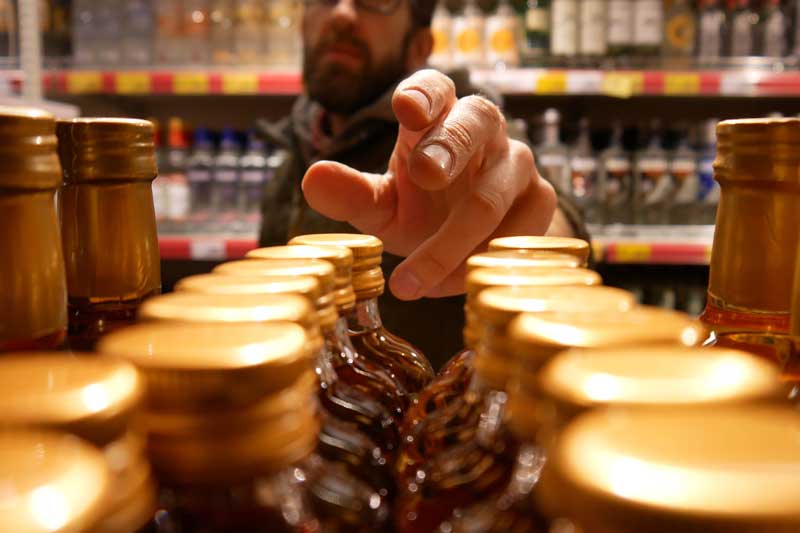What is a major challenge for those in the beverage alcohol industry? Navigating the complex 3-tiered system of alcohol regulation. This economic system has been present since post-Prohibition. Although it has been in place for over 100 years, it continues to remain a challenge for suppliers and distributors because of strong competition, industry consolidation, and complex government regulation.
Tweet: How distributors and suppliers can navigate the 3-tier system
For those in the beverage alcohol industry, there are still unanswered questions about the 3-tier system. Why is it still relevant today, and if not, will it continue to remain an industry challenge? How can we work to navigate this complex system? Let’s dive in and discuss.
What is the 3-tier system?
The 3-tier system is an economic system of producing, distributing, and marketing alcohol beverages. Key roles include the producers, distributors, and retailers:
- Tier 1 – The producer (supplier/importer): Suppliers or importers fall under this first tier because they produce the alcoholic beverages. An example of a beverage alcohol importer is Vino Del Sol, one of our customers. Another supplier, Duckhorn Vineyards, produces and sells six Napa Valley wine brands to various distributors. Hope Family Wines, a private winery based in California, sells various brands to distributors around the world.
- Tier 2 – The distributor (wholesaler): Importers or suppliers and importers then sell their products to distributors or wholesalers. Georgia Crown Distributing is one of the larger beverage alcohol distributors. Another distributor, Allied Beverage, works with more than 550 wine and spirits suppliers, while Lipman Brothers, a wine and spirits distributor based in Tennessee, manages distribution and operations for about 2,000 of the most widely recognized brands in the beverage alcohol market.
- Tier 3 – The retailer: Finally, distributors or wholesalers deliver and sell products to retailers. They are typically divided into 2 main categories: “off-premise” retailers, e.g. liquor stores, convenience stores, and “on-premise” retailers, e.g. bars, restaurants, hotels, etc. Finally, retailers market and sell products to consumers.
Some of the goals behind the 3-tiered system include regulating alcohol consumption, collecting taxes, and preventing monopolies. Over the years, the system has become more complex due to strong competition across wine and spirits markets, distributor consolidation, and complex government regulations.
How technology and analytics can help
How can distributors and suppliers work to navigate the 3-tier system? Analytics and technology. Those in the beverage alcohol industry can use technology and analytics to help them identify key metrics, manage potential business hurdles, understand their business, and strategize for growth and success. Here are some examples of how analytics can help navigate the 3-tier system.
Understanding points of distribution (PODs)
Suppliers need to analyze and know how much of their products are selling through their various points of distribution (PODs). Key questions suppliers need to answer are: Which distributors or retailers are selling most of my products? Which brands are most profitable? This information is critical because they can strategize their plans to produce certain products, redistribute resources, or reevaluate sales channels.
Analyzing account information
One of the key metrics distributors need to track to understand their businesses is account information. This metric is important because they need to understand where accounts are winning and losing. This information is also important because distributors can analyze which retailers are purchasing specific products and gain real-time insights on which products are selling.
Managing and forecasting inventory
Suppliers, distributors, and retailers need to understand their consumers’ purchases and preferences so they can produce, distribute, market, and sell products that match demand. Analytics and mobile technology can help them track and forecast sales and inventory data to understand what is selling and what is remaining on the shelves. By tracking this data, they will be able to minimize overstocks and stock-outs, which negatively impact revenue.
What is the future of the 3-tier system?
Will the 3-tier system continue to exist? This has been an emerging topic and question for those in the beverage alcohol industry. Some question the value of the 3-tier system because it is seen as archaic and antiquated; the 3-tier system originated after the end of Prohibition, a time when states wanted to regulate alcohol use and consumption. Today, emerging mobile applications and online direct-to-consumer deliver channels are starting to combat the 3-tiered beverage alcohol system, streamlining the distribution process and delivering products to consumer at a quicker rate. However, for now, those in the beverage alcohol industry can adopt solutions and analytical tools to give them a leg up against the 3-tier system.
Learn more about how our applications will help you combat the 3-tier system and keep pace with your business:
- Understanding Wineries’ Top 3 IT Priorities - September 18, 2018
- 3 Skills Tomorrow’s Distributor Executives Need to Know - August 29, 2018
- Dimensional Insight Book Club: Why We Sleep - August 23, 2018



